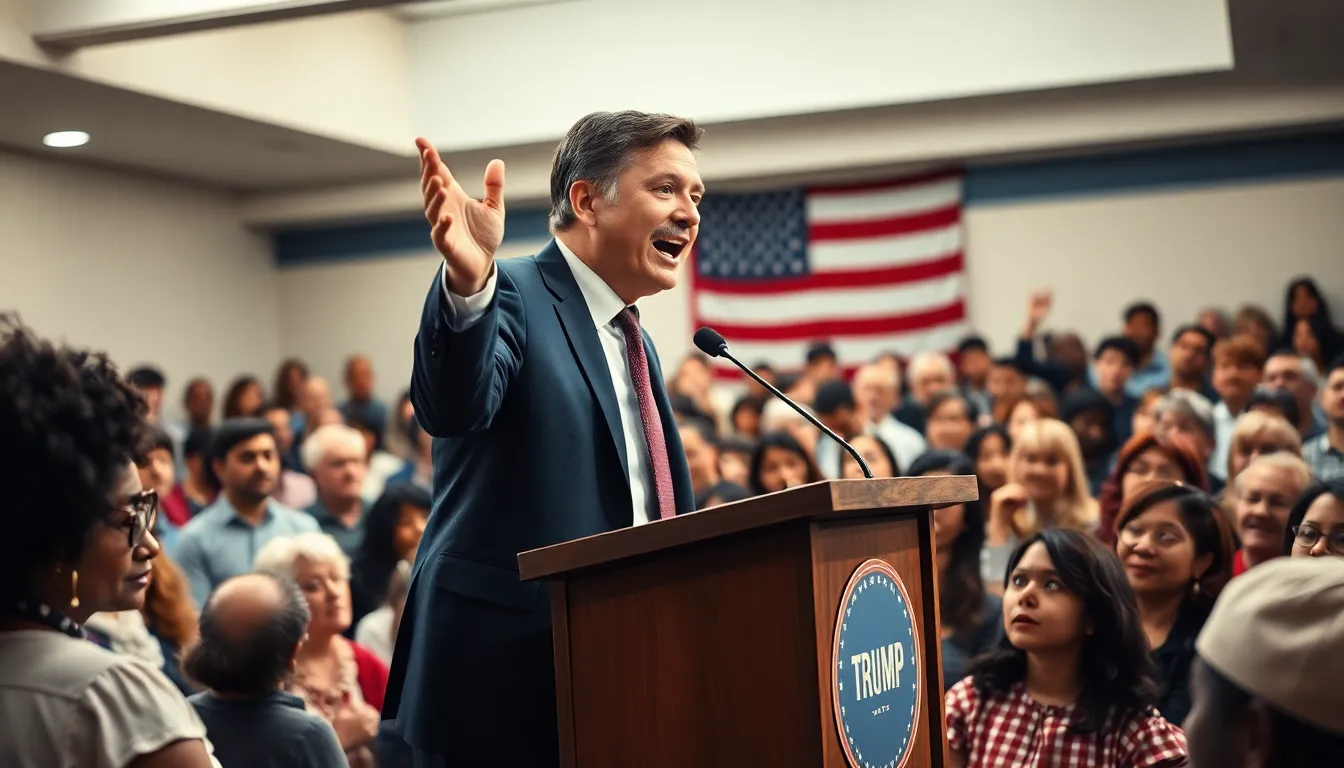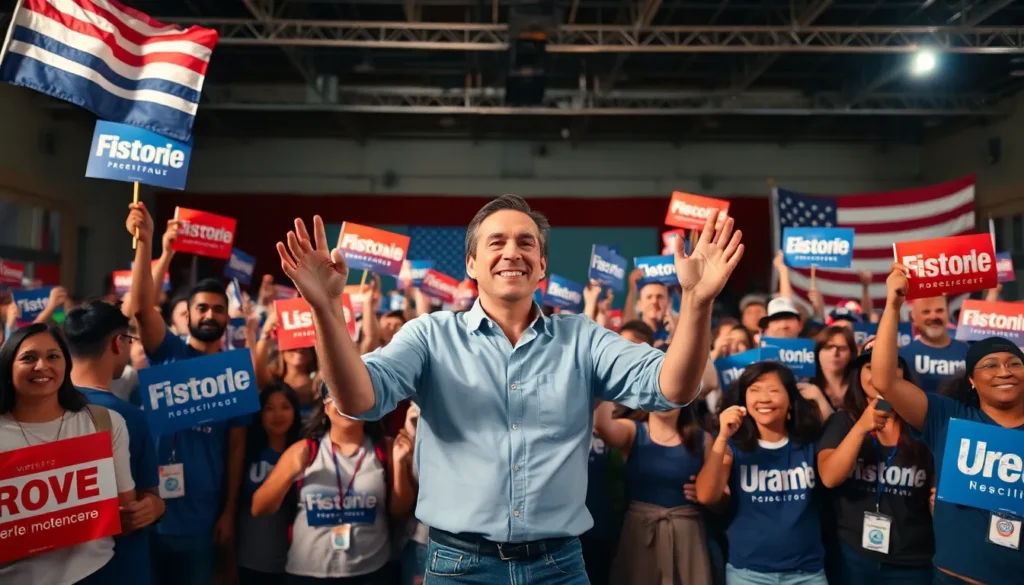Political campaigns are like reality TV shows—full of drama, unexpected twists, and a cast of characters vying for the spotlight. With promises that often sound too good to be true and debates that resemble verbal boxing matches, it’s no wonder voters find themselves both entertained and bewildered.
Table of Contents
ToggleOverview of Political Campaigns
Political campaigns encompass various activities aimed at attracting voter support for candidates or political parties. These efforts typically include rallies, advertisements, and debates, all designed to communicate messages effectively. Promises made during campaigns can often feel exaggerated; candidates strive to draw attention while balancing expectations.
Debates serve as critical forums where candidates present their viewpoints, often leading to confrontations that engage audiences. Their dramatic nature attracts media coverage, further amplifying candidates’ visibility. Diverse characters participate, each bringing unique styles to the race.
Strategy plays a crucial role in shaping campaigns. Data analytics and polling help identify voter preferences, enabling candidates to tailor their messaging. Campaigns often adapt quickly to shifts in public opinion, responding to current events or unexpected developments.
Outreach efforts extend beyond traditional means. Increasingly, candidates utilize social media platforms to reach younger demographics. Engaging content can foster interaction, creating an online presence that resonates with voters.
Understanding the emotional elements also proves essential. Candidates often harness personal stories that connect with voters and evoke empathy. Those narratives balance policy discussions, adding a human dimension to campaigns.
Analyzing the effectiveness of political campaigns depends on various metrics. Voter turnout, engagement rates, and media impact provide insights into campaign success. These factors collectively influence the political landscape, shaping future elections and candidate strategies.
Key Components of Political Campaigns

Understanding the key components of political campaigns reveals how candidates connect with voters. Each element plays a vital role in overall success.
Candidate Selection
Candidate selection involves a rigorous process. Political parties assess individuals based on experience, public appeal, and electability. Parties often conduct internal polls to gauge potential candidates’ popularity among voters. Evaluating demographics also shapes strategic choices about candidates. High-profile endorsements can significantly boost a candidate’s visibility and credibility, energizing the base. Recent elections demonstrated that candidates with strong community ties tend to resonate more effectively with voters.
Campaign Strategy
Campaign strategy comprises various elements to maximize outreach. Data analytics provides insights into voter behavior and preferences, guiding messaging. Crafting targeted narratives helps candidates connect personally with voters. Rallies, town halls, and debates serve as platforms for candidates to communicate their visions. Social media engagement particularly captures younger demographics, creating a buzz around the campaign. Coordinating efforts across multiple channels ensures consistent messaging resonates across diverse voter groups.
Fundraising
Fundraising represents a critical component in sustaining a political campaign. Securing financial support from donors enables candidates to expand their outreach efforts. Candidates often tap into high-dollar fundraisers, which can significantly bolster campaign resources. Grassroots donations foster a sense of community involvement, creating a loyal base of support. Various financing regulations dictate the sources and limits of campaign contributions, ensuring transparency. Tracking fundraising metrics informs candidates about their financial health and campaign viability.
Impact of Technology on Political Campaigns
Technology plays a crucial role in shaping modern political campaigns. Both social media and data analytics significantly influence how candidates engage with voters and strategize their outreach.
Social Media Influence
Social media platforms serve as vital tools for candidates to connect with voters. They provide avenues to share messages instantly and effectively. Engaging content often circulates rapidly, leading to increased visibility and audience reach. Many young voters rely on social media for news and updates, making these platforms essential for targeting this demographic. Campaigns that leverage interactive features, such as polls and live Q&A sessions, foster direct communication, building a sense of community among supporters. Experimenting with various formats—videos, memes, and infographics—enhances relatability and impact, driving voter engagement and participation.
Data Analytics
Data analytics transforms how political campaigns understand and reach constituents. Comprehensive voter data analysis enables campaigns to identify key demographics and tailor messaging accordingly. Utilizing polling data helps candidates gain insights into public opinion and sentiment. With this information, campaigns prioritize strategic outreach, focusing on environmental factors that resonate with specific groups. Segmenting voter profiles allows for personalized communication, which can significantly influence voter behavior. Moreover, tracking engagement metrics offers instant feedback on campaign strategies, facilitating quick adjustments as needed. Combining these elements creates a more effective and targeted political campaign.
Challenges Faced in Political Campaigns
Political campaigns encounter various challenges that influence their effectiveness and voter engagement. Understanding these obstacles is vital for navigating the campaign landscape.
Voter Apathy
Voter apathy poses a significant hurdle for political campaigns. Many individuals express disinterest due to dissatisfaction with candidates or feeling disconnected from politic discourse. Low turnout rates often reflect this disconnect. Campaigns frequently utilize strategies like town hall meetings to foster voter engagement. Real-time surveys and feedback mechanisms help campaigns gauge public sentiment. Addressing voter interests frequently leads to increased motivation and participation. Successful campaigns often prioritize reaching out to underrepresented demographics to combat this issue.
Misinformation
Misinformation significantly disrupts political campaigns by spreading false narratives and creating confusion among voters. Social media serves as a primary medium for the rapid spread of inaccurate information. Campaigns often face challenges in countering misleading claims made against candidates or their policies. Proactive fact-checking initiatives can help build credibility. Engaging with voters directly, addressing concerns, and providing accurate information fosters trust. Informed voters are essential for a healthy democracy. Campaign strategies often emphasize transparency to mitigate misinformation’s negative effects and encourage informed decision-making.
Political campaigns are a dynamic blend of strategy and emotion that shape the democratic process. As candidates navigate the complexities of voter engagement and the challenges of misinformation, their ability to connect authentically with the electorate becomes paramount. The use of technology and data analytics not only enhances outreach but also transforms how messages resonate with diverse audiences.
Ultimately, the evolving landscape of political campaigns reflects the changing nature of voter expectations and engagement. As campaigns continue to adapt to new challenges and opportunities, the importance of transparency and informed decision-making will remain central to fostering a healthy democracy.





